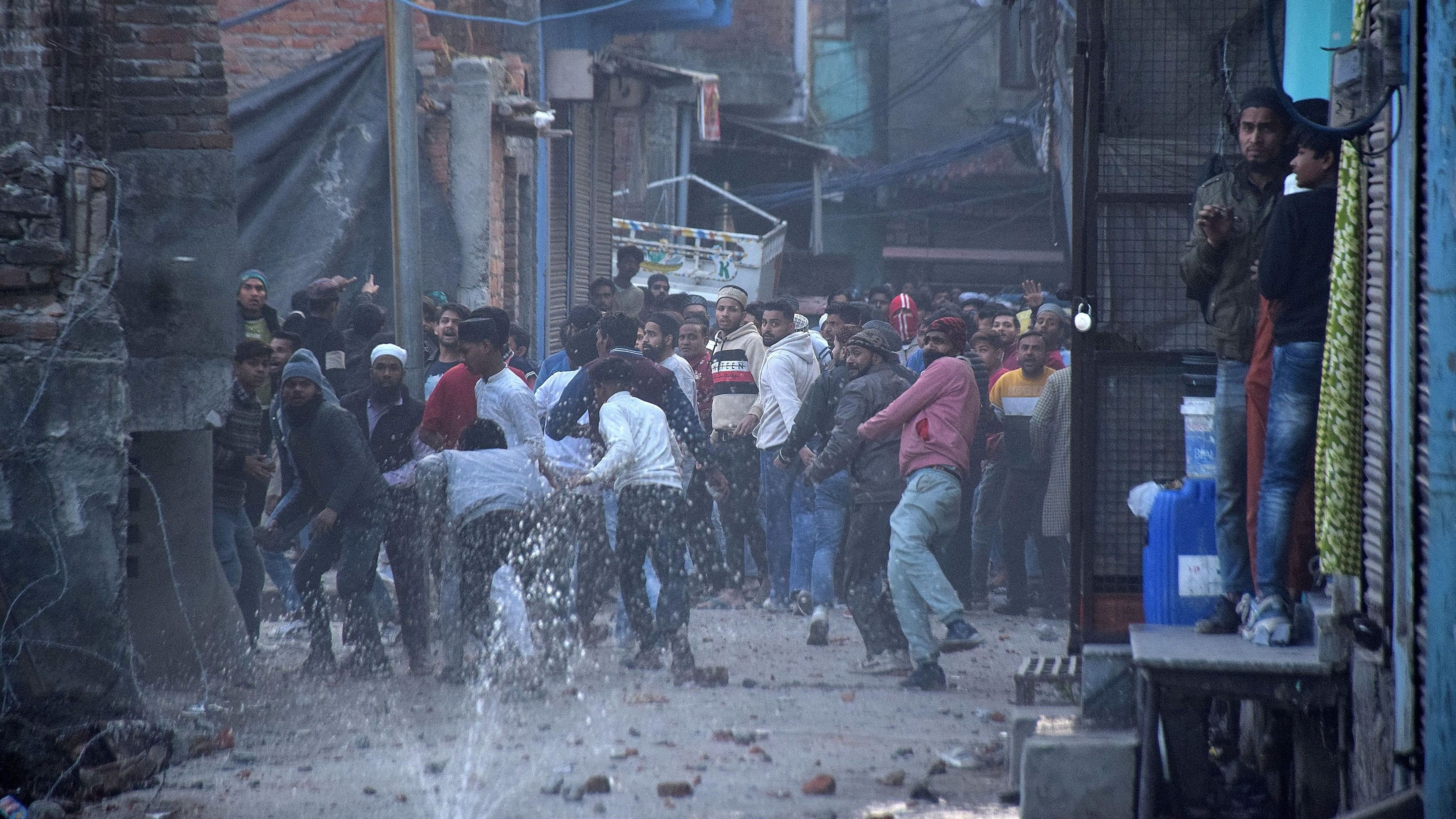
Demonstrators throw stones towards police during a protest against a government demolition drive, in Haldwani in the northern state of Uttarakhand, India, February 8, 2024.
Credit: Reuters Photo
Days after the demolition of the two-decade old madrassa that stood on the railway land in Uttarakhand's Banbhoolpura, the police have revealed that a man, identified as Abdul Malik, is suspected to be the perpetrator for the horrifying violence that killed as many as 4 while inuring at least 60 others.
According to Nainital Senior Superintendent of Police Prahlad Narayan Meena, Abdul Malik had carried out the "illegal construction," and was also responsible for sparking the protests. Malik who is reportedly a prominent person in Banbhoolpura with his ancestors being involved in business of horses during the British period, has also been involved in providing legal guidance to the families that faced eviction time and again.
“Last year, when eviction notices were served to families in the Banbhoolpura area following an order by the Uttarakhand High Court, Malik provided free of cost legal assistance to several people. That provided him a huge amount of public sympathy,” Indian Express quoted High Court lawyer Ahrar Baig as saying. Baig is one of the two counsels in a family’s petition against demolition.
The trades carried out by Malik's family first interested the British during initial period of 1900s, when the colony sought help from Malik's ancestors to ferry goods on horses. The British used this piece of the land to lay a railway line during 1880s connecting Haldwani and Kathgodam. With years and as the British colonies moved out, the land saw various types of encroachments.
On January 30 this year, a notice was issued under provisions of the Nazul (Nazool) Policy of Uttarakhand of 2021 and 2009, and the Municipal Corporation Act, ordering the vacation and demolition of the property by February 1, while failure to comply with the instructions would lead to forced demolishing of the madrasa by the Nagar Nigam.
Nazul land refers to government-owned land leased out for various purposes which also includes non-agricultural uses.
Amid the ongoing tussle for the ownership, Malik's wife Safia filed a writ petition in the Nainital High Court in February 2024, in which she said that the origins of the now-demolished madrasa, are linked back to a Nazul (Nazool) land that the British government leased in 1937 to one Mohammad Yasin — for an area of 13 bigha 3 biswa in Company Bagh of Haldwani. Indian Express quoted Safia as saying that the land was granted for agricultural purposes.
Days before the demolition, Nainital District Magistrate (DM) Vandana Singh told the media that the Nazul land is registered as Nagar Nigam’s Nazool land, and the notice of January 30 required the encroachment to be removed within three days or for the ownership documents to be provided.
Safia further said that this land in Banbhoolpura was sold by Yasin to Akhtari Begum and Nabi Raza Khan — but the date of sale could not be confirmed.
Later, Akhtari Begum verbally gifted this piece of the Nazul land (where the madrasa stood) to Safia's father and a witness to this was Akhtari's son Gaus Raza Khan who acknowledged the land transfer in an affidavit.
In 2007, Akhtari and Raza Khan filed a writ petition seeking mandamus from the Uttarakhand High Court to direct the State and the Nainital District Magistrate to issue suitable orders for grant of freehold rights.
The petition was disposed in August 2007, and the matter was passed to the District Magistrate. It was in 2013 after the demise of Safia's father she inherited the disputed Nazul land.
She contended that following the 2007 court order, the petitioners attempted to pursue the freehold of the property, but per the Nazul Department if the heir (s) of the owner who passed away is alive, she/ he shall be the owner of that property.
“On February 3, several locals visited the Nagar Nigam to discuss with our team. They submitted an application and requested time to appeal to the High Court, agreeing to abide by the court’s decision,” DM Singh said.
“That night, our forces conducted a flag march in preparation for the demolition the next day. However, locals presented a 2007 High Court order issued to the DM of Nainital regarding the disposal of an application. Unable to verify the legality of the disposal, we postponed the demolition to ensure adherence to proper legal procedures. We sealed the structure known as the madrasa with consensus, confirming it was unoccupied,” she explained noting that all legal formalities were completed before demolition.
“The following day, after the 2007 order was disposed of in our office, the concerned party sought a stay on the notice from the High Court. After a two-day hearing, the High Court declined to grant any relief to the petitioner. Since our preparations for the demolition were already finalised, we proceeded with the drive,” the DM added.